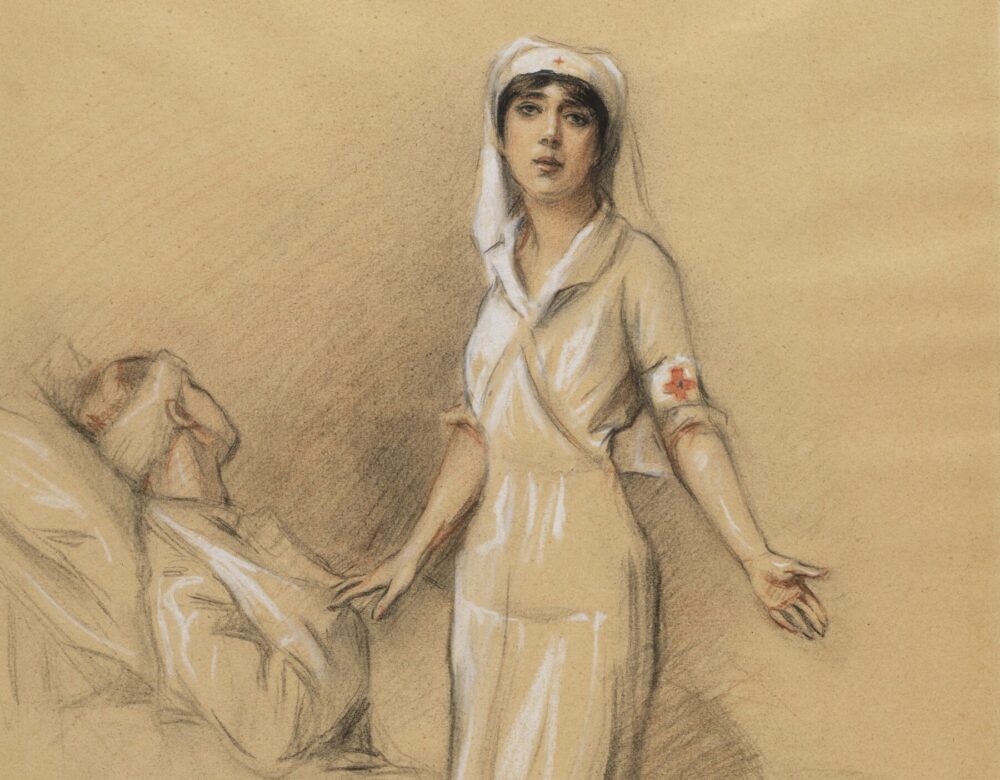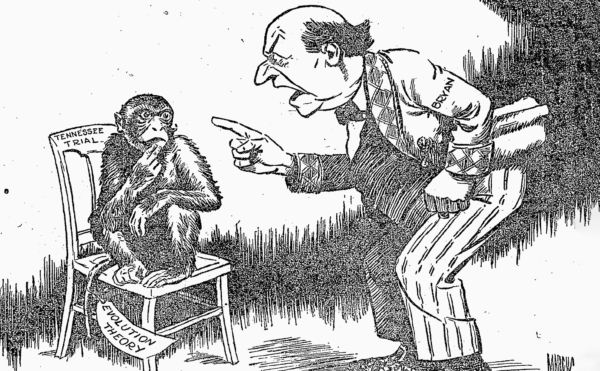Lucia de Berk, a nurse in Holland, was sentenced to life in prison after a string of her patients died. The evidence seemed pretty clear that she had been mis- or over-prescribing them, and the public was not on her side. Statisticians thought otherwise though.
About The Disappearing Spoon
Hosted by New York Times best-selling author Sam Kean, The Disappearing Spoon tells little-known stories from our scientific past—from the shocking way the smallpox vaccine was transported around the world to why we don’t have a birth control pill for men. These topsy-turvy science tales, some of which have never made it into history books, are surprisingly powerful and insightful.
Credits
Host: Sam Kean
Senior Producer: Mariel Carr
Producer: Rigoberto Hernandez
Associate Producer: Sarah Kaplan
Audio Engineering: Rowhome Productions
Transcript
One chance in 342 million. The law professor kept staring at the number—gaping, in shock. There had been a string of deaths at two local hospitals. And according to his calculations, they were almost certainly murders.
The suspect was a forty-year-old nurse named Lucia de Berk. She was tall and blonde, and worked shifts part-time at a children’s hospital. There, she’d been on hand for several unexplained deaths. The staff quickly grew suspicious.
Still, the staff knew that everything might just be due to chance. Perhaps de Berk was just unlucky in being around when the children died.
That’s where the law professor came in. He had an undergraduate degree in statistics. So he started running numbers. The results were damning. According to his figures, there was just one chance in 342 million that de Berk was a victim of bad luck.
Put another way, it meant with near-certainty that she was a serial killer—the worst serial killer in Holland’s history. And the professor was determined that his math would bring her to justice.
Lucia de Berk had a friendly relationship with her fellow nurses. At least on the surface. Many of them gossiped about her behind her back; they made fun of her hippie clothing and her obsession with tarot cards. In fact, de Berk worked at an elderly care hospital sometimes, and often read patients’ fortunes on duty—a big no-no.
Still, one nurse in particular thought de Berk wasn’t just flaky but dangerous.
Things came to a head with the sad case of baby Amber. From birth, Amber had suffered from a heart defect and had fluid in her lungs. She could eat only through a tube.
In July 2001, at four months old, Amber underwent heart surgery. She was also prescribed a drug called digoxin, which treats congestive heart failure. Both treatments seemed to help.
But on September 3rd, Amber began vomiting and had diarrhea. De Berk was working that day, and brought her to pediatricians around 1am for an examination. Despite her bad day, the doctors said she looked fine.
But around 3am, her breathing stopped and her heart flatlined. The pediatricians tried reviving her, but Amber was pronounced dead around 3:30.
Her sudden death left the medical staff baffled and heartbroken. What had happened?
One nurse was especially upset. Partly because the case reminded her of another recent death, that of a baby named Achmad.
The previous January, Achmad had mysteriously overdosed on sedatives and died after a surgery for stomach problems. Just like Amber, Achmad was seemingly doing well before a sudden crash. And Lucia de Berk was working the day he died.
Soon, rumors of foul play were flying around the ward. The suspicious nurse finally blew the whistle and told the chief pediatrician. The pediatrician had never liked de Berk, and quickly recalled three other incidents—more unexplained deaths when de Berk was working.
Initially, doctors had ruled all those deaths natural, if unexplained. But the chief pediatrician now overruled those judgments. She reclassified the deaths as suspicious and told the hospital’s director.
The director started pulling data about de Berk’s shifts. What he learned sickened him. De Berk had worked at the hospital three years at that point. And in her 134 shifts, there were eight unexplained deaths. All the other nurses had worked 887 shifts combined—and not a single unexplained death had taken place.
The director soon called the elderly care hospital where de Berk worked. He asked officials there to comb their records. Five more unexplained deaths popped up. Upon hearing this, the children’s hospital director called the police.
When confronted, De Berk professed shock. She swore that all the deaths were natural. Her presence was just random chance—bad luck.
But the police didn’t buy it. They began investigating, and quickly turned up more damning evidence.
Again, de Berk had worked at the children’s hospital for three years by then. For comparison, the police looked into how many unexplained deaths had occurred in the three years prior. They found—zero. Zero unexplained deaths in three years. Then de Berk shows up, and eight occur? It seemed awfully suspicious.
The police also seized de Berk’s diary. In November 1997, she wrote about how she, quote, “gave in to her compulsion.” And according to hospital records for that day, an elderly cancer patient of hers had died. Once again, the patient had been stable, and her doctor recalled being surprised by the sudden death.
The police asked de Berk about her so-called “compulsion.” She claimed that her compulsion was the occult, and admitted that she’d read tarot cards to the patient that day, against hospital rules. But the police knew better. Her real compulsion was murder.
Then the most damning evidence of all came through. Baby Amber had been autopsied, and the hospital had kept as evidence the gauze used to soak up her bodily fluids. Testing the fluids revealed suspiciously high levels of the drug digoxin—a dozen times higher than normal for the amount prescribed. And Lucia de Berk had a key to the cupboard where the drug was kept.
In December 2001, the police arrested de Berk and charged her with 13 counts of murder. The tabloids went wild. A nurse—a supposed life-saver—was instead preying on babies and old people. What a monster.
The newspapers dug up dirt on her personal life as well. De Birk had lived in Canada as a young woman, and had worked as an escort. She’d also falsified her credentials to get into nursing school.
During all this, de Berk maintained her innocence. But the police soon brought in the law professor mentioned before, who had a degree in statistics. He ran some numbers, and got the figure of one in 342 million. A microscopic chance that de Berk was simply the victim of bad luck.
The case shocked the entire Dutch nation. People talked about bringing back public hangings or the firing squad. No punishment would be too harsh for the likes of de Berk.
As the case moved to trial, however, something funny happened. De Berk’s lawyers took a closer look at the eight alleged murders at the children’s hospital.
Well, it turned out that de Berk wasn’t actually working during two of the deaths. She’d called in sick once, and another time was out of town.
But there was still plenty of evidence to prosecute. The diary, the high concentrations of drugs in baby Amber and baby Achmad. De Berk was swiftly convicted on multiple counts of murder, and both appeals failed.
Days after the second failed appeal, in 2006, de Berk suffered a stroke in her prison cell. The guards on hand assumed that she was faking it to win sympathy, and let her lie there for ten hours before calling a doctor.
As a result, De Berk ended up partially paralyzed and unable to speak. But honestly, people felt little sympathy for a serial killer who preyed on children and old people. After the stroke, de Berk was shipped to prison and left to rot for the rest of her life.
Except things didn’t quite work out that way. Less than five years later, the most prolific serial killer in Dutch history would walk out of prison a free woman. Because despite everything you’ve just heard, Lucia de Berk never killed a single soul.
Lucia de Berk owes her salvation to two tenacious siblings. One was Metta de Noo, a Dutch doctor. De Noo’s brother was married to the chief pediatrician who unearthed all the suspicious cases at the children’s hospital.
De Noo saw how obsessed her sister-in-law was with the case, and she got interested herself. And why not? It involved a serial killer. It seemed fascinating.
But when Dr. de Noo began reviewing the medical files in the De Berk case, she felt a pit form in her stomach. In the majority of the deaths, there was no evidence whatsoever of foul play. No poison, no violence, nothing. The only supposed evidence was the fact that de Berk was present. The case seemed flimsy.
Now, there was Baby Achmad, who’d overdosed on sedatives. Except, de Noo noticed that he’d been prescribed alarmingly high doses by his doctor. There were also instructions to give him even more sedatives if he appeared restless. From what De Noo saw, an overdose was almost inevitable.
De Noo approached her sister-in-law with these findings. But her sister-in-law told her to back off. She knew de Berk, knew what a monster the woman was. A huge fight erupted, and de Noo and the sister-in-law stopped speaking. De Noo’s brother cut off contact as well.
Luckily, de Noo had another brother. Ton Derksen, a philosophy professor. When de Noo mentioned the case to him, he started sleuthing around as well, focusing on baby Amber.
Again, Amber had a dozen times more digoxin in her blood than she should have. But it turns out there’s a natural molecule in the body that resembles digoxin. Indeed, the drug mimics this molecule.
Unfortunately, the police had used a cheap test that couldn’t distinguish between the natural molecule and the drug. Derksen convinced the police to try a more sensitive test that did distinguish. And according to that test, she had only 3½ times more than she should have.
And even that figure was artificially high. Remember, the test involved fluids from the gauze leftover from Amber’s autopsy. That gauze had been sitting around for a while, and some of the liquid had evaporated. That increased the concentration of the drug remaining behind, pushing the number too high. In reality, the concentration in Amber was normal.
Next up, Ton Derksen began dismantling the statistical case against de Berk.
During his research, Derksen came across another sad death at the children’s hospital. It involved a baby named Kemal. He’d overdosed on sedatives—the cases looked identical. So why wasn’t de Berk charged in Kemal’s case? Simply because de Berk wasn’t working that day.
That told Derksen something. That the people investigating de Berk had been biased in gathering their data. What they should have done is pulled up a list of unexplained deaths, tried to determine if each one looked suspicious, and then figure out whether de Berk was present.
Instead, the hospital staff did the opposite. They determined when de Berk was present, then started fishing for reasons why the unexplained deaths looked suspicious. It was a textbook example of confirmation bias—letting your prior beliefs sway your interpretation.
Derksen found other problems, too. Again, the police had searched for unexplained deaths in de Berk’s ward for three years prior to her starting there. They found zero. Unfortunately the name of the ward had changed right before de Berk joined. So in the database, it just looked like there were no unexplained deaths because the police were searching under the wrong name.
Derksen soon got the records for the correct ward and found seven unexplained deaths in the three years prior to de Berk starting. Overall, then, there were seven deaths before her arrival, and eight afterward.
And remember, de Berk wasn’t present for two of those eight. So in the three years before a serial killer arrives, there are seven deaths. Then the serial killer shows up—and there’s just six? Does that make sense?
Equally bad, investigators had examined data only from the pediatric and the elderly care hospitals. But they ignored three other hospitals where de Berk worked–where there were no suspicious deaths. And think about it. What segments of the population are most prone to dying? Infants and old people. That alone made de Berk’s death count seem far higher than normal.
With this better data, Derksen approached some actual, professional statisticians. They reran the numbers on the likelihood of de Berk being present for so many unexplained deaths. And the number they got dropped dramatically. From one chance in 342 million, to one in 1200.
Now, one in 1200 still might seem suspicious. But there were a quarter-million nurses in Holland. So in a normal year, a few hundred of them would be present for as many deaths as de Berk. It was indeed all just bad luck.
Derksen and his sister de Noo began evangelizing about de Berk’s innocence. It wasn’t easy to get people to listen. Even the Dutch minister of justice refused to listen at first. An occult-loving serial-killer nurse was a much juicier story anyway.
But the siblings’ doggedness paid off. Through media appearances and grassroots organizing, they won de Berk a new trial in 2010. After her stroke, she still struggled to walk but had recovered enough of her speaking ability to testify on her own behalf.
During the trial, her defense lawyers hammered the prosecution’s case, pointing out the biased stats and sloppy drug tests. And incredibly, the prosecution agreed. As the trial was wrapping up, they actually asked the judge to free de Berk. Even the prosecutors didn’t believe in her guilt anymore.
As a result, de Berk was acquitted of all charges in April 2010. She bravely limped out of prison under her own power, a free woman at last.
Sadly, de Berk’s case is far from being the only miscarriage of justice due to bad statistics. In fact, I’ve put together a bonus episode at patreon.com/disappearingspoon about other instances. Most of the accused are young mothers, who not only endured the deaths of their children, but were then charged with murder and suffered widespread public hatred. They’re terrifying cases of math gone wrong. That’s pateron.com/disappearingspoon.
So what lessons should we take from the de Berk case? First, medicine is mysterious. Patients doing well one day suddenly die all the time. It’s sad, but it’s no one’s fault.
Second, there are statistical lessons. Gather your data fairly, without bias. And when examining data, don’t let your prior beliefs sway your interpretation.
Third, be careful of self-righteousness. De Birk’s accusers thought they’d uncovered a serial killer. And they were so determined to root out the evil that they lost all objectivity.
Fourth, although these weren’t factors in the de Berk cases, there are other things to consider with hospital deaths. Sometimes nurses are just bad—clumsy, or whatever. That doesn’t mean they’re murderers.
Or sometimes, the best nurses get the toughest cases, the people most likely to die anyway. So a higher death rate is an artifact, not a crime. Even time of day can affect things. People on overnight shifts make more mistakes because they’re sleep-deprived. And specialty doctors usually aren’t available overnight, which again leads to higher death rates.
Heck, some nurses just work more—double shifts. And of course, the more you’re around the hospital, the more deaths there will be on your watch. You have to be very careful with statistics.
But the most important overall lesson is also the hardest one to swallow. That human beings are simply bad at statistics. We have poor intuitions for numbers and coincidences. We hate randomness, especially around death. We want someone to blame, so we invent patterns and see things that are not there.
Unfortunately, these errors are very hard to root out, because they’re built into our brains. Remember, that law professor who calculated the one in 342 million figure wasn’t some bumbling fool. He had a degree in stats. Yet he still made ghastly, life-destroying decisions. He and others were so convinced they had uncovered a monster that they never stopped to wonder if they were doing something monstrous themselves.




